AI predictive segmentation transforms how businesses understand and engage with customers through CRM systems. By analyzing large datasets, including unstructured data, AI creates precise customer segments, predicts behaviors, and enables personalized interactions. Here’s what you need to know:
- What it is: AI uses machine learning to go beyond traditional segmentation, analyzing both structured and unstructured data to predict customer behavior.
- Benefits for CRM:
- Real-time updates and dynamic adjustments.
- Personalized marketing and lead scoring.
- Reduced churn through predictive insights.
- How it works:
- Data Preparation: Standardizing, enriching, and linking data to create unified customer profiles.
- AI Modeling: Components like scoring workers and debouncers ensure accurate and efficient predictions.
- Implementation Steps:
- Assess CRM compatibility with AI tools.
- Set up a unified data architecture.
- Use APIs or pre-built connectors for seamless integration.
- Results: Improved campaign performance, higher lead conversions, and better retention rates.
| Feature | Traditional Segmentation | AI Predictive Segmentation |
|---|---|---|
| Data Type | Structured only | Structured + Unstructured |
| Focus | Past actions | Future behaviors |
| Targeting | Broad segments | Individual personalization |
| Updates | Static | Real-time |
AI segmentation is reshaping CRM strategies by providing actionable insights, automating processes, and enhancing customer engagement.
Integrating AI into CRM Systems
How AI Processes Data in CRM Systems
AI takes CRM data and turns it into predictive segments using advanced workflows. By understanding how this process works, organizations can better utilize customer data while maintaining accuracy and meeting compliance standards.
Steps in Data Preparation
-
Data Auditing and Standardization
This step identifies inconsistencies in CRM data and standardizes records. Validation rules are set up to ensure uniformity across all customer information . -
Data Enrichment
Data is improved by filling in missing details, removing duplicates, cross-referencing external sources, and deleting outdated records. -
Record Linkage and Integration
Related records are connected to create unified customer profiles. This ensures all customer interactions and touchpoints are linked within the CRM system .
This refined data forms the backbone for developing machine learning models.
Machine Learning Model Development
Once the data is prepared, AI models create precise customer segments. The Prediction Engine framework streamlines this process at scale . Here’s a breakdown of its main components:
| Component | Function | Impact |
|---|---|---|
| Update Listeners | Tracks data changes | Enables real-time monitoring |
| Debouncer | Filters unnecessary updates | Cuts contact scoring requests by 44% |
| Scoring Workers | Calculates model features | Improves accuracy |
| Delta Threshold | Ensures updates are relevant | Reduces CRM updates by 22% |
AI combines online and offline inferencing to process various data types. These include demographic data (like age and location), behavioral data (such as browsing habits), transactional details (purchase history), and psychographic attributes (preferences and interests) .
Recent advancements have boosted efficiency. For instance, splitting logic in offline inferencing has cut processing time by 57% for deal scoring, while limiting online inferencing to critical data points has reduced the load for contact scoring by 41% .
However, challenges remain. A recent study found that 80% of business leaders are concerned about explainability, ethics, bias, and trust in AI . This highlights the need for transparency and ethical practices throughout the AI data processing pipeline.
sbb-itb-2ec70df
Setting Up AI Segmentation in Your CRM
Adding AI predictive segmentation to your CRM system takes careful planning and execution. With 46% of business owners now using AI in their customer relationship management systems, according to Forbes , it’s important to know how to set it up effectively.
CRM Integration Guide
Start by checking if your CRM supports AI tools. Not all platforms are compatible with every AI solution . For example, Pipedrive’s February 2025 update highlighted the importance of features like SmartApps and an AI marketplace search engine for successful integration.
Here’s a breakdown of the process:
-
Technical Assessment
Confirm your CRM supports API integration and assess whether your system can handle AI processing and data storage. -
Data Architecture Setup
Create a unified data structure for consistent and reliable information :Component Purpose Requirement Data Validation Ensures data accuracy Input validation rules Security Protocol Protects sensitive data Encryption + MFA Synchronization Enables real-time updates Event-driven architecture -
Integration Implementation
Depending on your resources, you can use custom coding, APIs, or tools like Zapier to connect systems . Cloud-based solutions are a good option for scalable integrations .
After completing these steps, monitor for any issues that might disrupt system performance.
Common Issues and Solutions
Here are some common challenges and how to handle them:
-
Data Quality Problems
- Use automated data validation tools.
- Employ AI-driven data cleansing solutions.
- Schedule regular audits to catch and fix issues early.
-
Performance Issues
- Implement smart caching for faster mobile access.
- Use event-driven architecture to enable real-time updates.
"Integrating AI into your customer relationship management (CRM) system reshapes client interactions, automates tasks and provides deeper insights."
- William Sigsworth, Head of SEO, Pipedrive
For smoother integration, consider platforms with pre-built connectors for popular CRM tools . These reduce technical hurdles while ensuring your system remains reliable.
Finally, test your setup thoroughly. Include unit, integration, end-to-end, performance, and user acceptance tests to catch potential problems before they affect your operations.
Using AI Segments for Business Growth
AI segmentation, combined with CRM systems, helps businesses achieve measurable growth by improving customer engagement. For instance, 91% of consumers are more likely to shop with brands that offer personalized and relevant deals . By turning AI insights into actionable strategies, businesses can enhance marketing efforts, improve lead scoring, and reduce churn.
Creating Targeted Marketing Campaigns
AI segmentation allows businesses to create highly focused marketing campaigns by analyzing patterns in real-time. This precision leads to better results, such as a 14.31% boost in email open rates .
"With our new segments AI feature, simply describe the customers you want to reach and AI will create a segment for you. In seconds, you’ll have a targeted segment for your next product launch or cross-sell campaign. This saves you time and takes the guesswork out of segmenting your audience" .
| Segmentation Impact | Performance Improvement |
|---|---|
| Website Effectiveness | 2-5x more effective |
| Campaign Personalization | 80% accuracy |
| Open Rate Increase | 14.31% higher |
AI-Based Lead Scoring
AI-driven lead scoring helps businesses identify and nurture high-value leads more effectively. Companies using this approach have reported marketing conversions increasing by 9-20%, while churn rates dropped by 13-31% .
"These account insights are invaluable – knowing what our clients are looking for and being able to proactively tailor and personalize their experience is a true win-win for both our clients and IBM" .
For successful AI lead scoring, focus on:
- Data Quality Management: Maintain accurate and consistent data across CRM platforms.
- Cross-functional Alignment: Establish clear criteria for identifying valuable leads.
- Continuous Optimization: Regularly update and refine scoring models to stay effective.
Reducing Customer Churn
AI-powered churn prediction can lead to impressive results. For example, Hydrant achieved a 260% increase in conversion rates and a 310% boost in revenue per customer using these tools .
To minimize churn, businesses should:
1. Monitor and Respond to Customer Signals
- Track customer engagement and behavior.
- Use AI insights to offer proactive support.
- Address potential issues before they escalate.
2. Deploy Tailored Retention Tactics
- Design interventions based on AI-identified risks.
- Use predictive analytics to engage customers at the right time.
- With 71% of consumers expecting personalized interactions , this approach ensures stronger retention.
"According to a survey conducted by Dynamic Research, 98% of organizations worldwide either recognize the importance of personalization to their overall business strategy or have made it the backbone of their customer experience operations." – SalesIntel
Summary Points
AI predictive segmentation is reshaping how businesses engage with customers through CRM systems. With all marketing decision-makers aiming to enhance their AI capabilities , this technology bridges the gap between guesswork and precise, data-driven strategies.
Here’s a quick look at the benefits and their impact:
| Benefit | Impact |
|---|---|
| Micro-segmentation | Target customers with precision |
| Real-time analysis | Adjust audiences dynamically |
| Predictive insights | Take proactive engagement steps |
| Automated processing | Save time and reduce manual work |
Growth-onomics Services

To make the most of these advancements, businesses can partner with experts like Growth-onomics. They specialize in data analytics and performance marketing, offering support in customer journey mapping and building strategies rooted in data. This expertise ensures businesses fully leverage AI-powered CRM systems.
Key steps for effective implementation include:
- Integrating diverse data sources
- Aligning segmentation efforts with business objectives
- Regularly refining strategies based on performance
- Equipping teams with the right knowledge and tools









